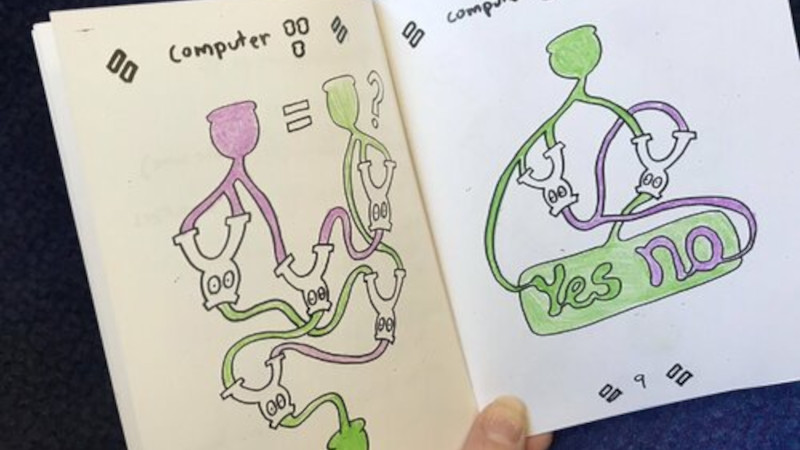While Radio Shack did have the Color Computer, we don’t think they had this in mind. [Pepepépepe] has some coloring book pages and simple rules that let you simulate logic circuits using a crayon. The downloadable ‘zine has hand-written instructions and several examples.
Keep in mind, this is a computer in the same way the old logic kits in the 1960s were computers. They are really demonstrations of digital logic circuits. To work the “computers”, you pick two colors, one for a square and the other for a circle. You color pathways until you reach a “nory.” The nory, which looks suspiciously like a slingshot with eyes, has a special rule. If both branches of the nory have your circle color on them, the output of the nory will be the square color. Otherwise, the color coming out is the circle color.
Obviously, this rule generates a NOR gate where the circle color is a zero and the square color is a one. Since the colors propagate down the paths, you can draw display elements including 7-segment displays and make them work.
There are a few more rules to learn and you can build a computer that even has a game pad. No kidding. Is this practical? Of course not. But it might be a fun introduction to digital logic for a smart kid, and who knows where that will lead?
It would be fun to recreate some of the old Geniac “computers” like this. If you like paper computers, there’s CARDIAC (you can even simulate that paper computer on an FPGA).















I love it. Although I was a little confused about the Yes/No answer. It took me a minute to figure out that “highlighted” meant whichever word was different from the background color. In the picture above the answer is NO because it is purple and the background is green. If the colors were swapped, the background would still be green, but the YES would be purple instead. It’s very clever. I gotta test it out with my 8-year old.
No 6809E ??? Its not a real “co-co”
Having downloaded and read through it, enjoyed the idea,
I think more explanations are needed. And if you paint wrongly, you cannot correct.
We did a version of our TPS / Myco using 16 TicTac boxes, one box per function,
where you could set the status using pins – into one of the 16 holes of 0 to F.
Have a look in our facebook page
https://www.facebook.com/groups/269499491046124
or just work through the book – no hardware involved except for paper and pencil
https://www.amazon.co.uk/gp/product/B08MN15NMQ/ref=dbs_a_def_rwt_bibl_vppi_i26
Burkhard Kainka’s TPS on paper only.
Or try The TPS Emulator Wilfried Klaas did
https://sourceforge.net/projects/tpsspsemulator/